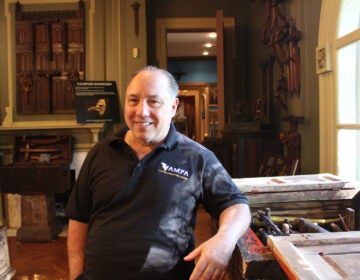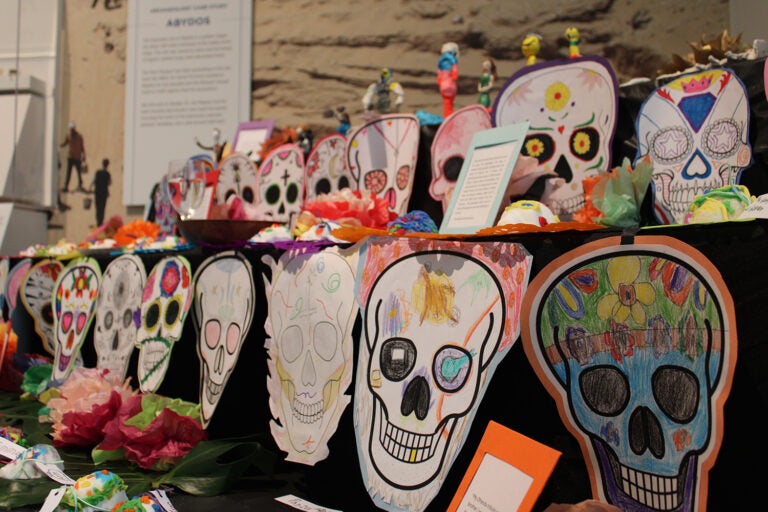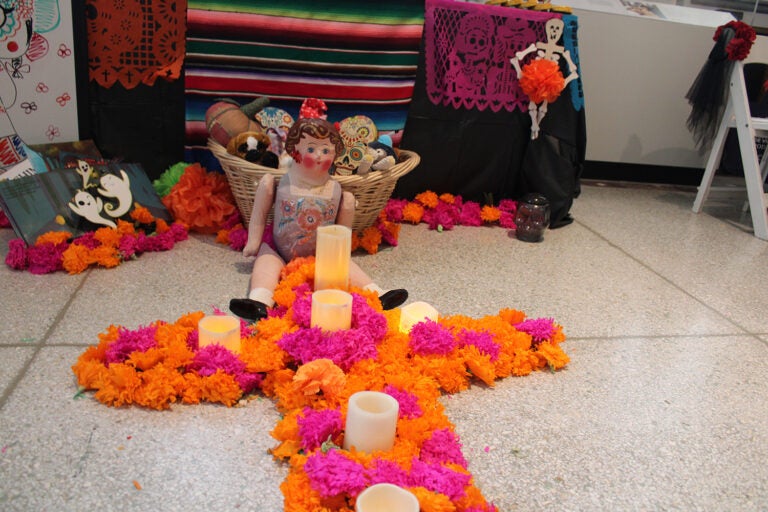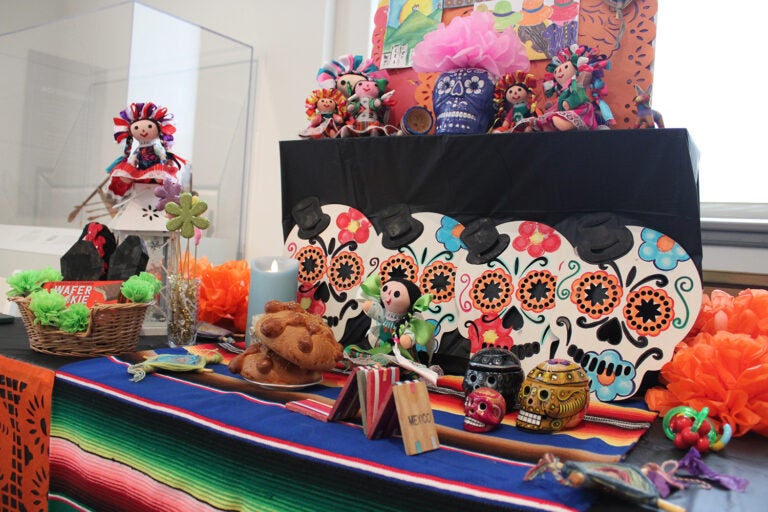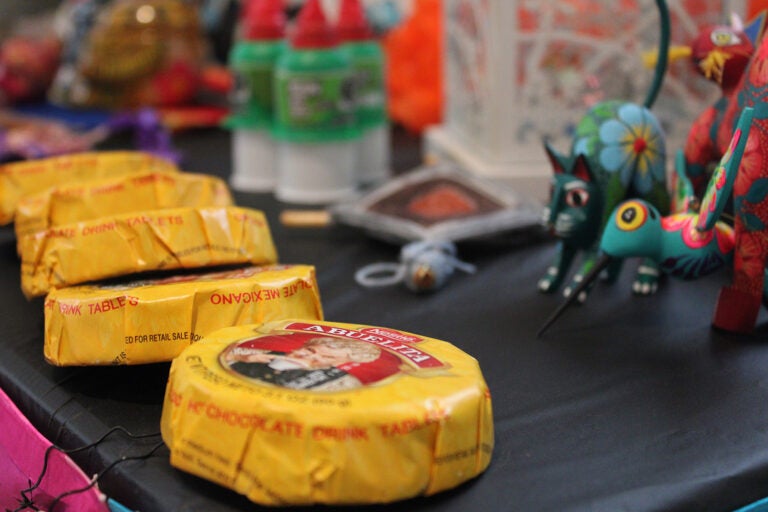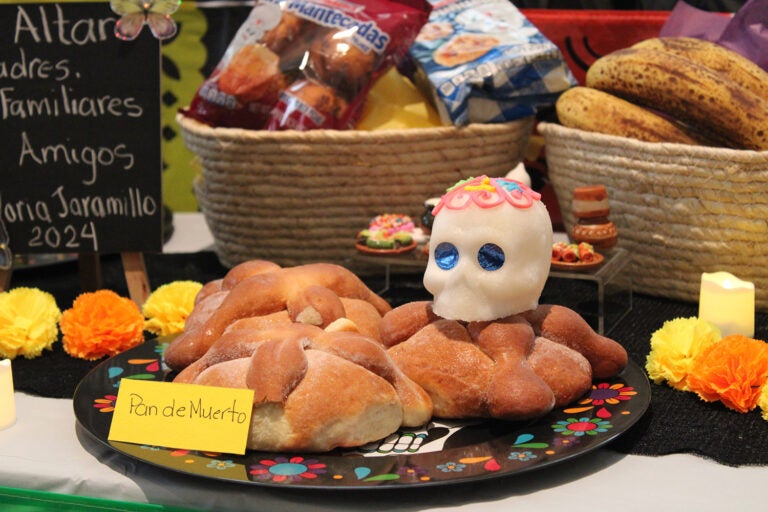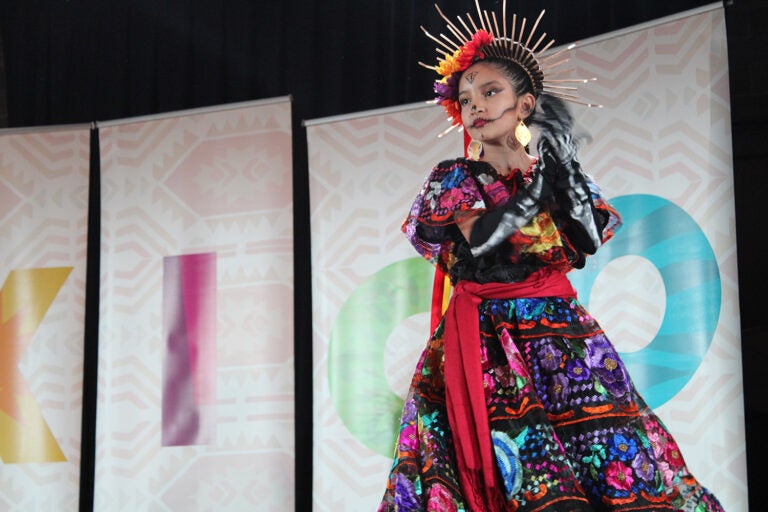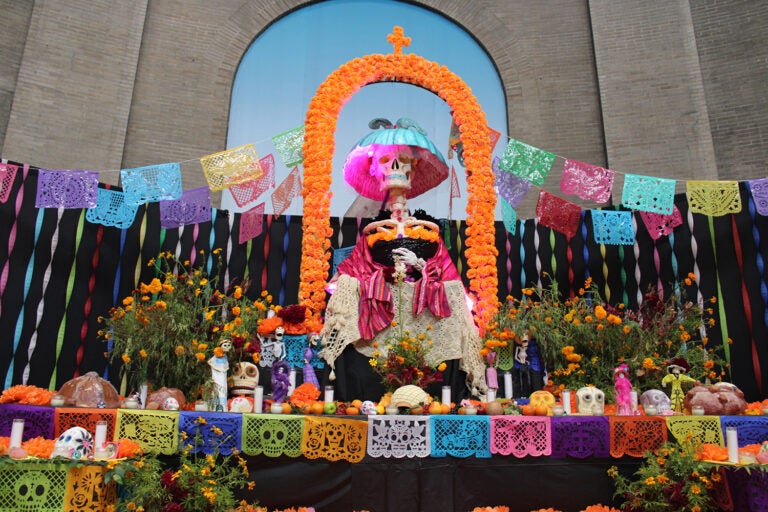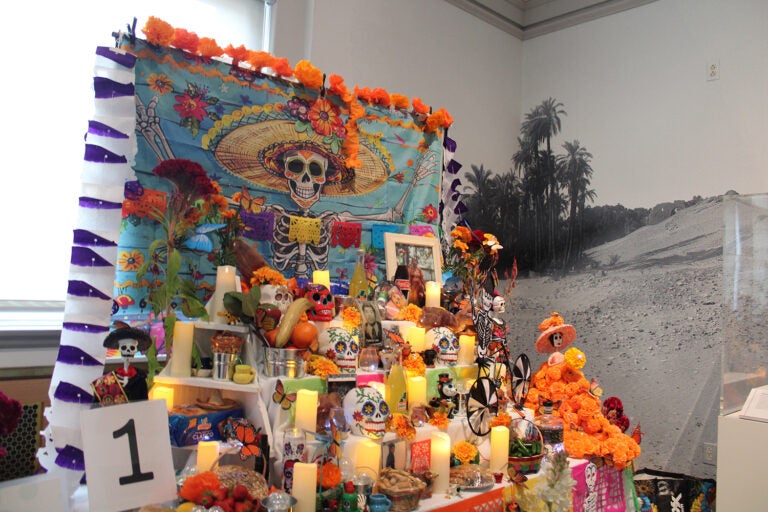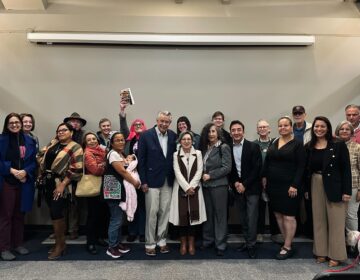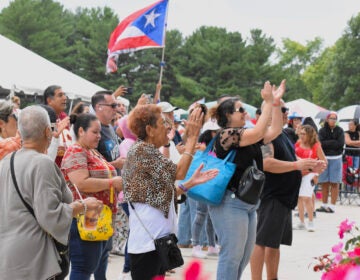‘A celebration of the dead’: Community members honor Día de los Muertos at Penn Museum
For many Mexicans, Día de los Muertos is a blend of somber and joyful rituals to remember loved ones who have died.
Listen 1:08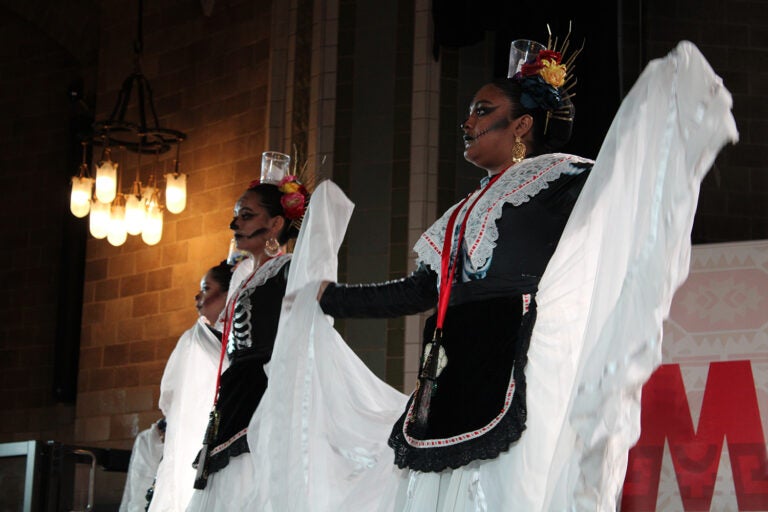
Dancers from Ballet Folklorico Yaretzi performed at Penn Museum and the Mexican Cultural Center's Día de los Muertos celebration on Saturday, Oct. 26, 2024. (Emily Neil/WHYY)
From Philly and the Pa. suburbs to South Jersey and Delaware, what would you like WHYY News to cover? Let us know!
For the 14th year, Penn Museum and the Mexican Cultural Center teamed up and hosted a daylong Día de los Muertos celebration.
Nearly a thousand people passed through the museum Saturday, stopping to look at elaborate community “ofrendas,” or altars, that honor loved ones who have passed away. There was also an enormous centerpiece memorializing those who have died from breast cancer.
For many Mexicans, Día de los Muertos is a blend of somber and joyful rituals to remember family members and friends who have died. Many people build altars in their homes that feature food, clothing or other objects that their loved ones enjoyed while alive.
Araceli Guenther, president of the board of the Mexican Cultural Center, said Día de los Muertos is “one of the most symbolic traditions within the Mexican culture.” The rituals trace back to those practiced by the Aztecs thousands of years ago.
“The meaning of the Day of the Dead is actually a celebration of the dead,” Guenther said. “Of the people that have gone before us and the way that we remember them.”

On Saturday, dancers, artists, a marketplace featuring small business owners and a clown showcased Mexican culture for attendees of all ages. Museum guests were offered hot chocolate and “pan de muerto,” a sweet bread made in Mexico this time of year.
Zuhail Corro created one of the community altars with her friend, Stephanie Placido.
Their altar was dedicated to children who have died, with rows of dolls representing each child remembered by the artists and their friends. The dolls were arranged among toys, books and candy that are favorites of children in Mexico.
Corro pointed toward a trail of marigold petals stretching in front of the altar, with candles placed throughout.
“Las florecitas, es para formar el puente entre el mundo de los muertos y el mundo de los vivos”, dijo Corro, añadiendo que las velas son para guiarlos en el camino.
“The flowers are there to form the bridge between the world of the dead and the world of the living,” Corro said, adding that the candles are to guide the dead on their way.
Joanna Raymond Ruiz, a junior at University of Pennsylvania, along with fellow students Jimena Olivares Rivera and Marijose Villareal, created an altar dedicated to victims of violence in Mexico.
Raymond Ruiz said she has fond memories of celebrating Día de los Muertos while growing up in Mexico City. In middle school, she won the class competition three years in a row for creating the best altar.
Even though Día de los Muertos celebrations are “way bigger” in her home country, Raymond Ruiz said being able to participate in a public event like the one at the museum is “really important.”
“I think this really helps with being homesick,” she said. “This kind of helps us be able to connect with our culture when we’re not Mexico, and then also share.”

She said a lot of people can benefit from the “different perspective” to grief that the holiday brings.
“It makes it into something more joyful, and something that you can really connect to without feeling really sad,” she said. “And I think that’s something that’s really nice to do.”
Tena Thomason, associate director for public engagement at the Penn Museum, has been helping to organize the event since its start in 2012. She said attendance has grown over time, and it’s become a “springboard” for their engagement with the Mexican community beyond the one event.
“You can really see that the community has embraced the event,” Thomason said. “We’ve done many other programs now with the Mexican Cultural Center, too, so it’s not just a one time thing, but there’s really a relationship that we’ve built with them and among the community.”
For Guenther, of the Mexican Cultural Center, it’s all a part of preserving Mexican culture and traditions for generations to come.
“Sometimes second, third generation that were already born here, they’re not as familiar…with the symbolism of the event,” she said. “I think it’s that that’s the way that we look at it in terms of sharing and keeping it alive.”

Get daily updates from WHYY News!
WHYY is your source for fact-based, in-depth journalism and information. As a nonprofit organization, we rely on financial support from readers like you. Please give today.



